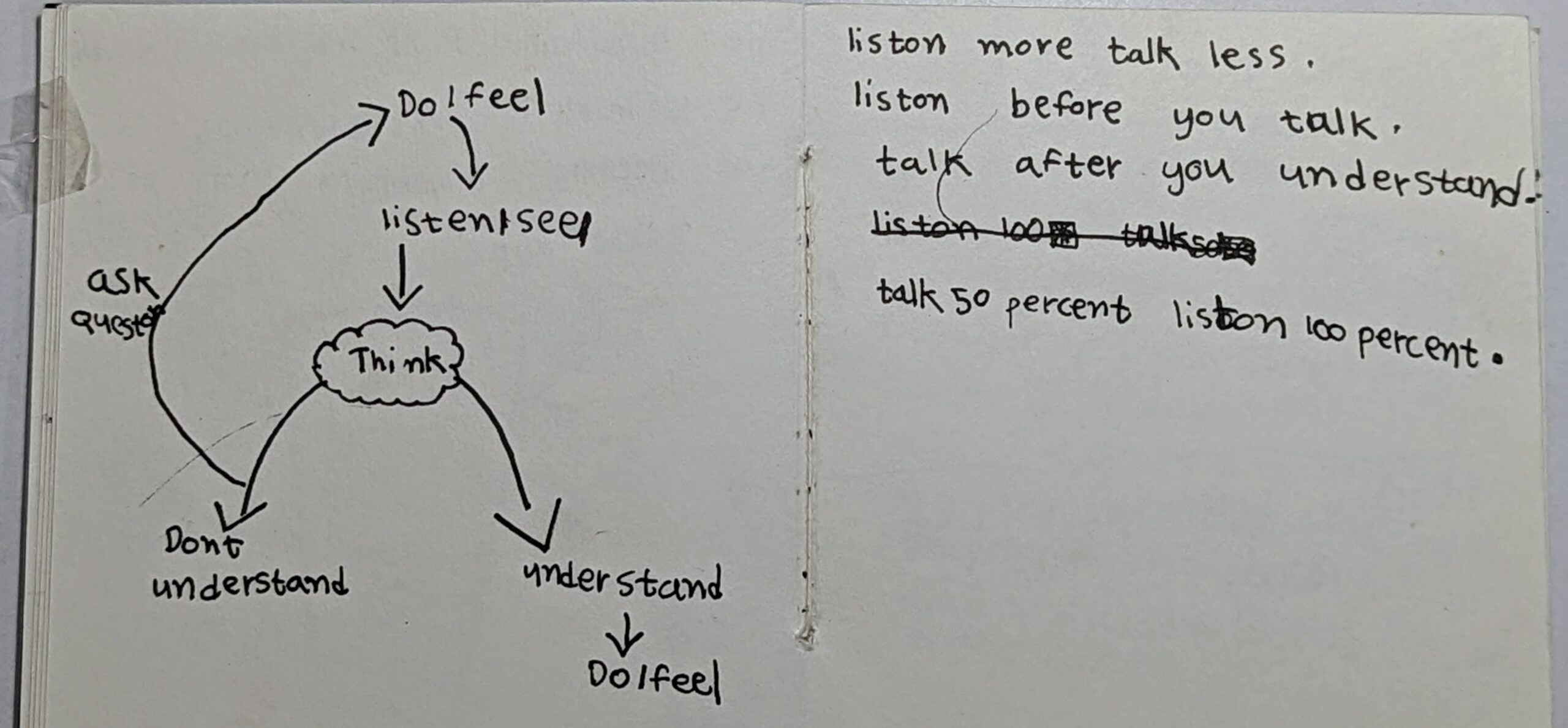“For the past 3 years our (now) 12yr old son, Vidur, has been setting up a game stall at our society Diwali mela.
While his objective was to have fun, I had a selfish motive.
To teach him about money.
This year he earned 12K in profit.
And he can’t believe it!
1st year lesson: Sales
3 years back I wished for him to learn sales.
How to drive conversions?
What to write on the cardboard?
How to select the prizes?
How to price?
He ran a “break the can pyramid with 3 balls” game.
Priced it at Rs. 10 for 3 balls.
Made a sale of Rs. 4,000.
Had no idea the cost of the prizes he gave away, or something called profit.
But understood that he could have charged more.
Classic startup haha!
2nd year lesson: Costs
Last year, I wished for him to learn costs.
Fixed costs (stall cost, game cost etc) and variable costs (prizes).
He had a budget to work with.
He didn’t like that one bit.
“Why can’t we give away cool prizes?”
“Because they cost money, Vidur. And you only have so much to spend.”
He ran the same game.
Made a sale of Rs. 8,500.
Spent Rs. 5,000 in prizes and Rs. 3,000 in fixed costs.
He thought he made Rs. 8,500.
Cute! :))
3rd year lesson: Profits
This year, I wished for him to learn how to make money.
And I saw a different Vidur at work!
He decided on a new game.
Players had to throw table-tennis balls into 10 cups arranged as a cone, each with a score 1-10.
You total the score and basis that win prizes.
I asked him how much he wanted to make, in profit percentage?
He said atleast 75%
Wow!
I said, ok – let’s play excel excel :)))
We made an excel sheet.
Built the numbers.
I could see his mind work.
Sales:
His game pitch was “Earn Rs. 15,000”
How?
Score more than 30 points in 3 or 4 tries and pick any of the following prizes – which included a Marshall speaker for Rs. 15,000 (he didn’t buy it – we already had one).
He priced 3 tries for Rs. 20, 4 tries for Rs. 40.
Costs:
He wanted most people to walk away with a prize, however small.
So he set 5 slabs
1-5 points: Lollipop (worth Rs. 5)
6-10 points: Frooti (worth Rs. 10)
11-20 points: Frooti + Oreo (worth Rs. 20)
21-30 points: Coke + Oreo + Kitkat (worth Rs. 30)
30+ points: Pick from the grand prizes
He went about buying all of these, on a returnable basis from the local shop (very smart of him to consider returnable).
Invested 2,700 to do so.
Plus 2,000 for the stall.
Plus 500 for misc setup.
Profits:
He was on a roll that day.
I was the cashier handling the money.
He was the one selling and making people play.
Enticing them to go for 4 tries (for Rs. 40).
Celebrating each ball dropping into a cup.
Mid-way he realized the game was harder than he thought it would be.
So he encouraged the same people to play again, because it is a skill game eventually.
It was wonderful to see him in action.
End result:
Sales: Rs. 16,600 (40% went for 4 tries!)
Costs:
- Rs. 2,500 fixed
- Rs. 2,200 prizes
Profit: Rs. 11,900
What did he do?
Kept 1,900 with himself and asked me to invest 10K
How did he feel?
On top of the world.
He can’t believe he did it.
While he gets a fair bit of money on his birthday and other family events, this is the most he has made on his own.
And I don’t think anything else will come close to making this money feel sweeter!
PS 1:
He has been investing nearly all the money he has got till date, through me.
Has invested 1.05L so far, which has reached 1.23L at an XIRR of 24%
PS2:
This was the excel sheet we made :))
https://t.co/B7ipKKvMwi
Source: https://twitter.com/warikoo/status/1723989015723167848
 Copied
CopiedChildren are always bursting with questions. But, let’s be real, we didn’t always have the answers or the time to spare. So, we introduced Sabi to ChatGPT+. Here’s how it played out:
- Safety first. We kicked off chats with: “Hi, I’m Sabi. I’m a seven-year-old in second grade. Can we talk?” This let ChatGPT know a young mind was on the other end.
- Quenching curiosity. Sabi dived into everything from “How did the universe begin?” to “How do you play with 1-year-old babies?” Sure, some replies were cliche, but to a seven-year-old, it’s fresh info.
- Intellectually active. Instead of just zoning out in front of the TV, she posed questions, read back, and thought of what to ask next.
- Better screen time. Suddenly, those hours in front of a screen weren’t just passive; they were educational.
- Typing skills. Introducing her to a laptop for this meant she got a head start on keyboard skills.
 Copied
CopiedWhen raising Sabi, we often faced a common question: “How does Sabi juggle so many tasks at 7?” Our method? Think about how you organize your days as young adults, and we did something similar for her.
We have mass-printed weekly planners for Sabi. On the left side, we outlined essential tasks—like brushing teeth or practicing math. Beyond that? She got to fill in the rest, mapping out her week.
Each week, she used two sheets. Every Sunday night, she sketched out her ideal week. Then, as each day passed, she noted what she really did on a second sheet. She’d review her notes every morning, setting the tone for her day.
Notice the phrase “prepare for”? The planner has inculcated the habit to not just show up, but to plan ahead and make the most of from showing up.
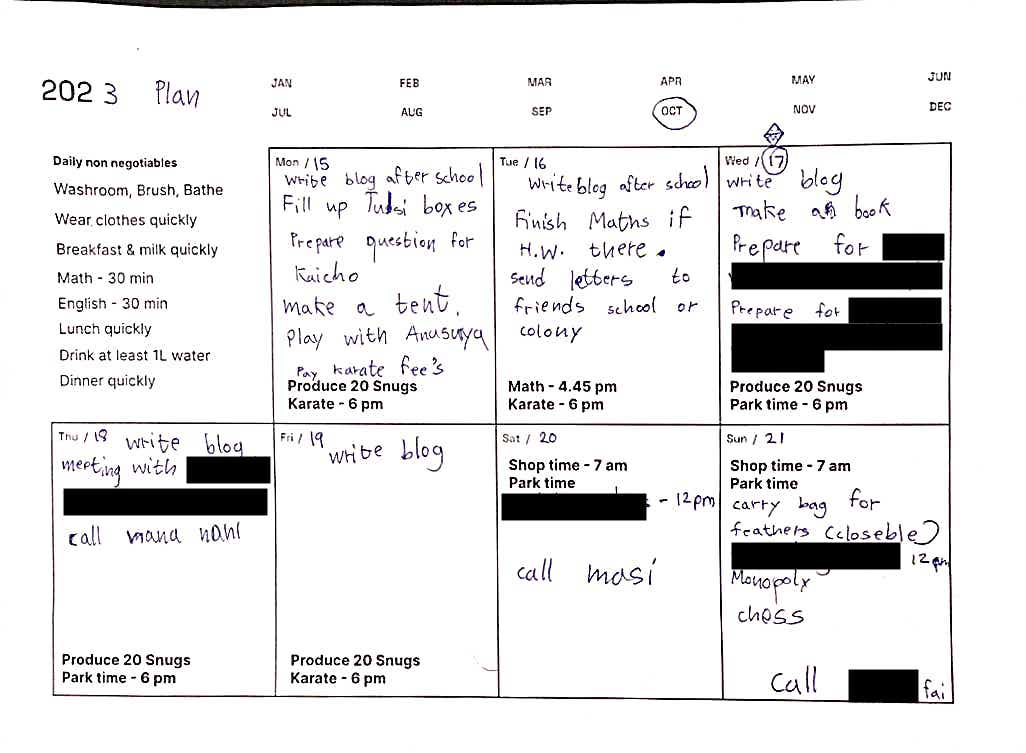
 Copied
CopiedImagine a machine which is nothing more than a row of boxes that extends as far to the left. Let’s call it a “two-one machine” both written and read in a funny backwards way.
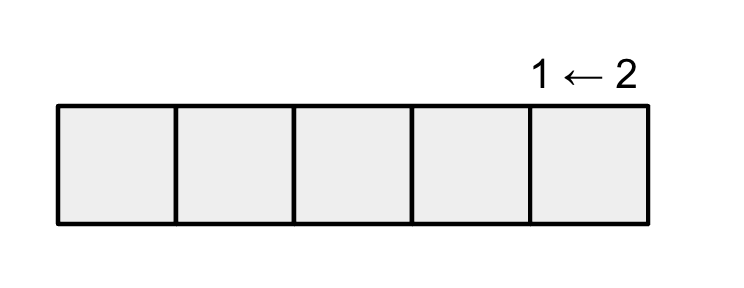
And what do you do with this machine? You put in dots. Dots always go into the rightmost box.
- Put in one dot, and, well, nothing happens: it stays there as one dot.
- But put in a second dot – always in the rightmost box – and then something exciting happens. Whenever there are two dots in a box they explode and disappear – Bhoom! – to be replaced by one dot, one box to the left.

We see that two dots placed into the machine yields one dot followed by zero dots.
Putting in a third dot – always the rightmost box – gives the picture one dot followed by one dot.
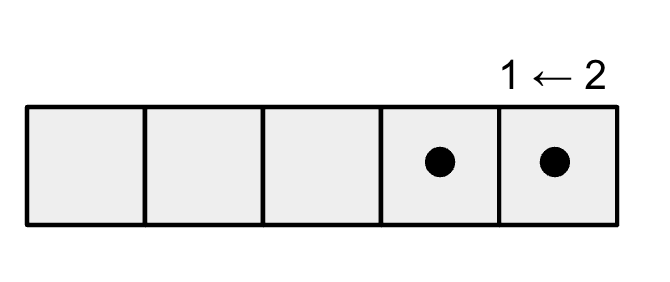
Let’s make a table and do it for all numbers till 10
| Numbers | 1 <- 2 |
|---|---|
| 1 | 1 |
| 2 | 10 |
| 3 | 11 |
| 4 | 100 |
| 5 | 101 |
| 6 | 110 |
| 7 | 111 |
| 8 | 1000 |
| 9 | 1001 |
| 10 | 1010 |
Here is a visual way to look at it
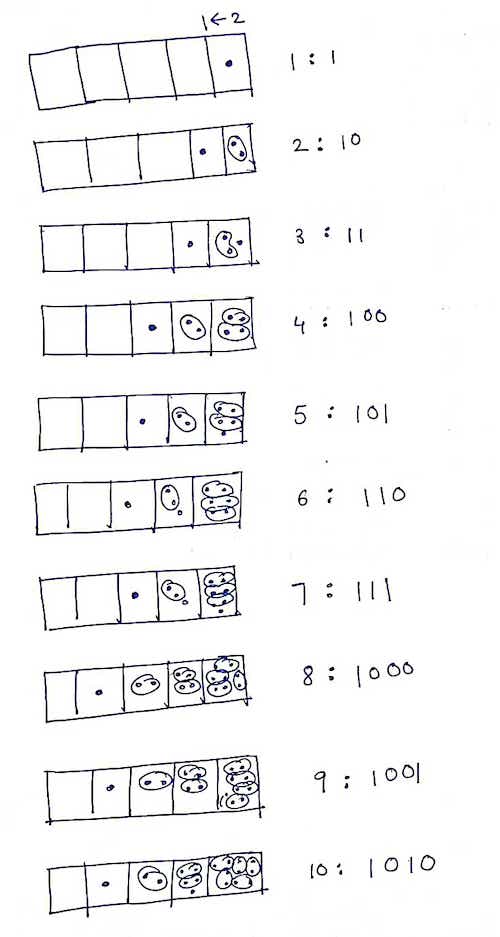
Now, instead of playing with a 1 <- 2 machine, we could play with a 1 <- 3 machine (again
written and read backwards, a “three-one “machine). Now whenever there are three dots in a
box, they explode away to be replaced with one dot, one box to the left.
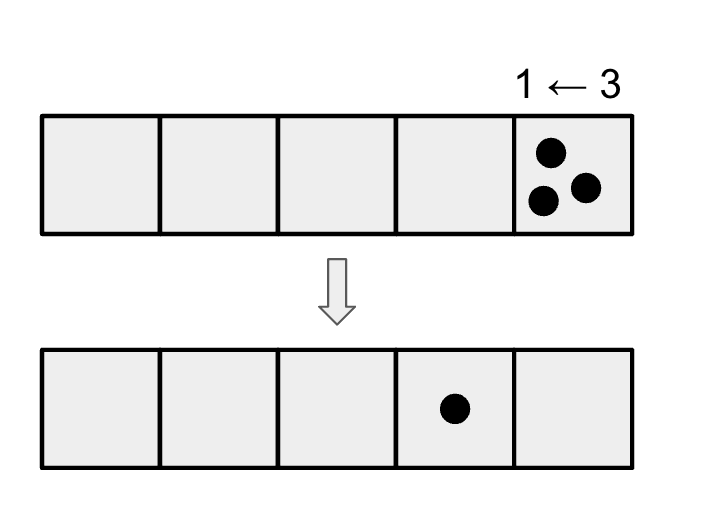
| Numbers | 1 <- 3 |
|---|---|
| 1 | 1 |
| 2 | 2 |
| 3 | 10 |
| 4 | 11 |
| 5 | 12 |
| 6 | 20 |
| 7 | 21 |
| 8 | 22 |
| 9 | 100 |
| 10 | 101 |
You can try this for different types of machine: 1 <- 4, 1 <- 5 and so on…
What are these machines doing?
Can you figure out what these machines are actually doing? Why is the code for two hundred and seventy-three in a 1 <- 10 machine, “273”? Are all the codes for numbers in a 1 <- 10 sure to be identical to how we normally write numbers. If you can answer that question, can you then also make sense of all the codes for a 1 <- 2 machine? What does the code 1101 for the number thirteen mean?
Both the above approaches, teaches the concept of binary (1 <-2) , tertiary (1 <- 3) and decimal (1 <- 10) number systems.
 Copied
CopiedPuzzle: Consider you have squares of different sizes 1cm, 2cm, 3cm, 4cm and 5cm. How many minimum number of squares can be used to cover 7 x 7 matrix?
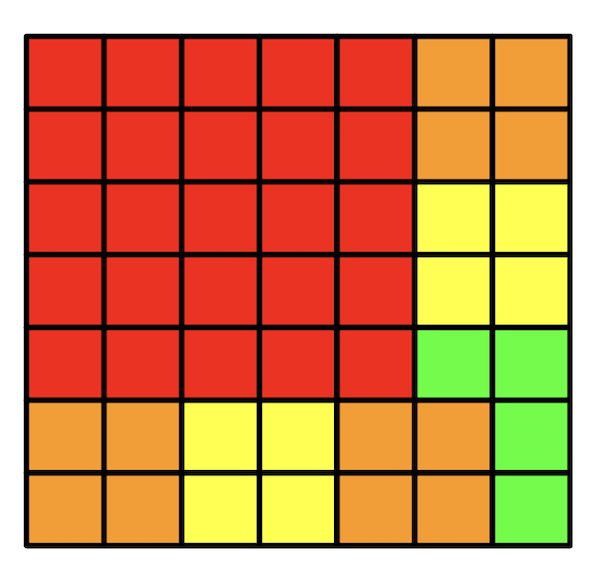
The most common answer that you will end up easily by trying different combinations of squares is 10. However, there are less than 10 squares that can fit it. Here’s the solution for it:
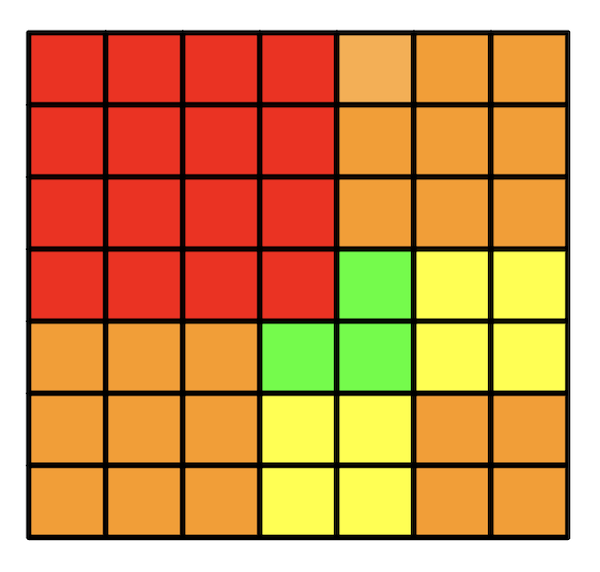
 Copied
CopiedThere are patterns even in daily objects arounds us. A book’s or any grocery product barcode may look like a bunch of random digits, but there is a secret mathematical code hidden in the barcode.
What pattern do you see in the Barcode below?

- There are alternate black and white vertical stripes
- Some stripes are thick and some stripes are thin
- It starts and ends with black color stripe.
Puzzle: Consider a 10cm barcode. How many different patterns can you create using combinations 1 cm or 2 cm (black and white stripe)
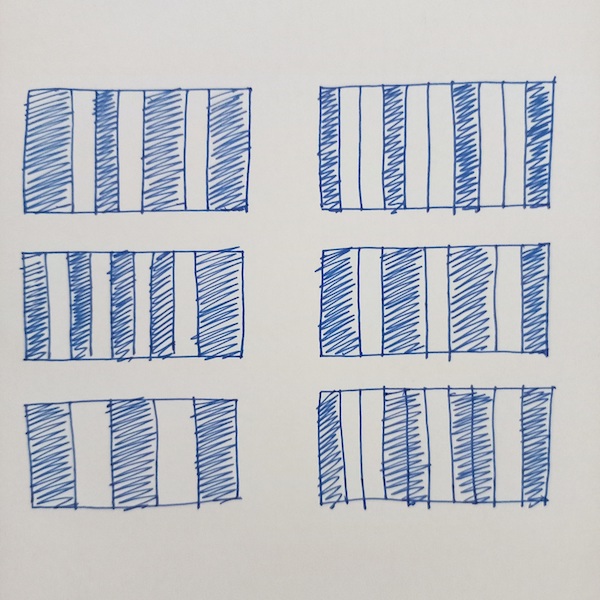
You can use paper cut outs of 1 cm and 2 cm and then place them in different combinations to find the patterns.
 Copied
CopiedWhen Sabi was younger, we encouraged her independence. Simple tasks like choosing outfits or tying shoe laces were hers to tackle. One day, Sabi attempted to comb her hair, which is soft and tends to frizz. A mishap led to a tangled rubber band and we had to snip a bit of her hair. We advised her to wait until she turned 10 to tie her hair again. Yet, her curiosity persisted.
Last October, when her aunt inquired about a gift, Sabi’s initial thought was dolls. This took us aback, since dolls never truly caught her interest. A moment later, she wondered aloud if there were dolls with lifelike hair and accompanying combs. Sabi wanted to comb the doll’s hair to learn how to comb her own hair.

 Copied
Copied

What is the difference between the two leaves?
- Gulmohar has Rounded leaves while Jacaranda has Pointed leaves
- …
- Gulmohar leaves are in pair of two, while Jacaranda leaves are in pairs of two with one single leave at the tip of the stem. Hence, Gulmohar leaves are 2n and Jacaranda leaves are 2n+1.
 Copied
CopiedWe bought the Noise Champ Smart Watch for Sabi. Here’s how it benefited her:
- Setting Goals During Walks: While walking, Sabi wasn’t sure how much further she should go. The watch’s pedometer let her set and track the 10,000 step goal.
- Time Awareness: With the watch, Sabi started understanding time and planning her day better.
- Learning Responsibility: Besides caring for her plants, Sabi learned to keep her watch charged. It might seem simple, but it’s a big deal for kids.
- Killing Time: When accompanying her mother at meetings, or at restaurants, or on long drives, Sabi kept herself busy with games like TicTacToe on the watch.
 1
1 Copied
CopiedWe learned the importance of not letting our child depend too much on just one group of friends. Relying on one group makes their social life fragile and can push your child to act out of character as they become Smoothies. Additionally, they might miss out on different experiences and not learn how to judge character well. We don’t want our child to be unprepared for the world outside.
So, we made sure Sabi had a mix of friends.
- Some of these friends are math nerds, some sports fanatics, some much older than her, some younger, some rich, some poorer. You get the point.
- This included pals from Seido Karate Dojo, neighbors in our living area, schoolmates, family, attending mother’s meetings, attending Global Shapers, and regulars customers of Snug Monsters. It’s all about giving them a balanced social life.
If one part of Sabi’s social life took a hit, she knew how to shift her focus to another. This gave her a well-rounded social foundation.
 Copied
Copied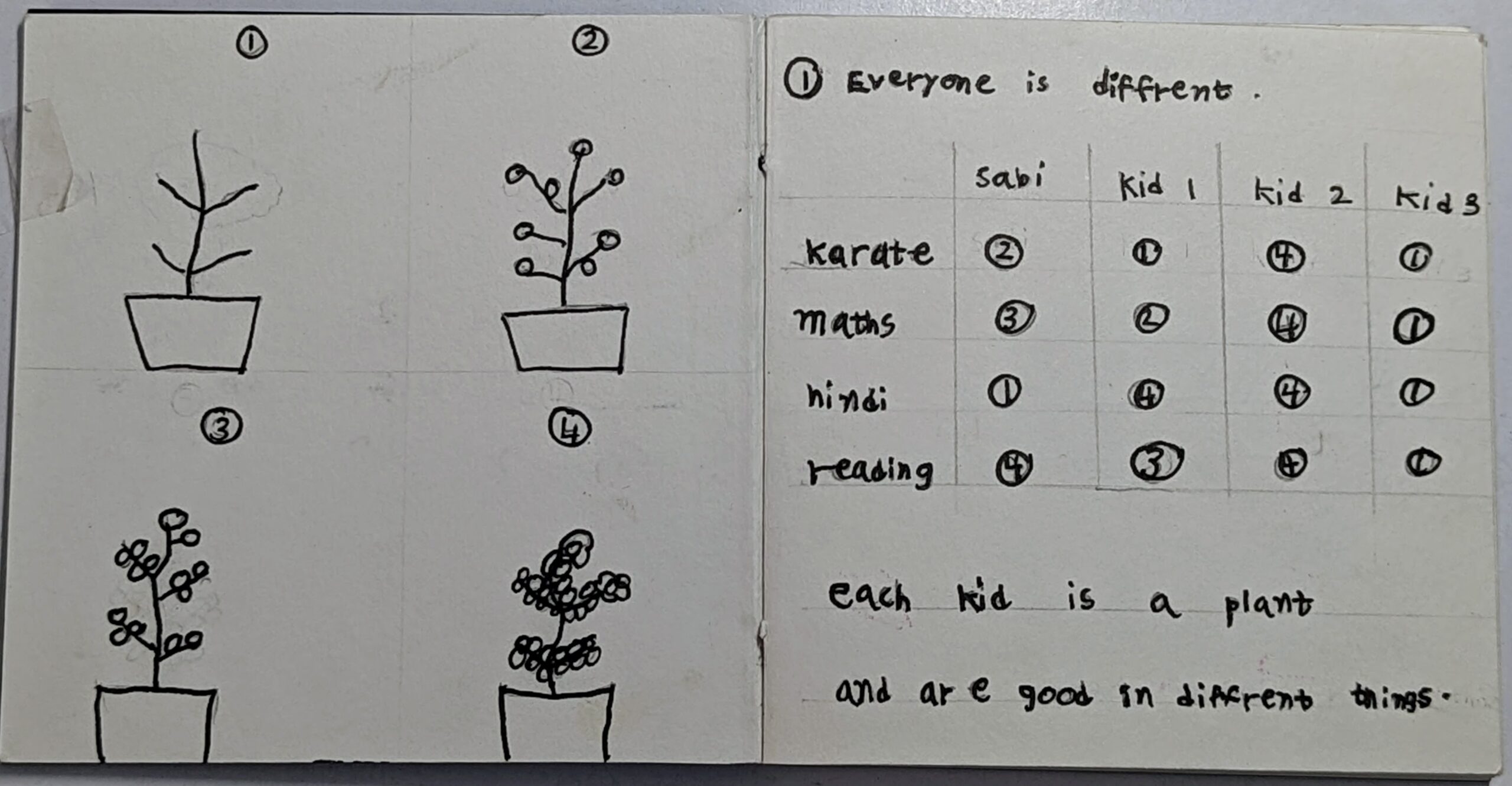
In the months following the reopening of schools post-Covid-19, we noticed Sabi interacting more with her peers. Naturally, she began drawing comparisons.
To address this, we purchased five identical Bonsai Trees. Over the next few months, Sabi cared for these plants and made several observations: A tree placed in direct sunlight got burnt and didn’t survive. Another remained sturdy, though it shed most of its leaves. Yet another had fewer leaves. Of the last two, both were lush with leaves, but only one showcased tiny blossoming flowers.
From this experience, Sabi learned that each living being, whether a Bonsai or a child, is unique. Comparing oneself to others is futile. What truly counts is to build on what you’ve got and keep on improving against yourself.

 Copied
Copied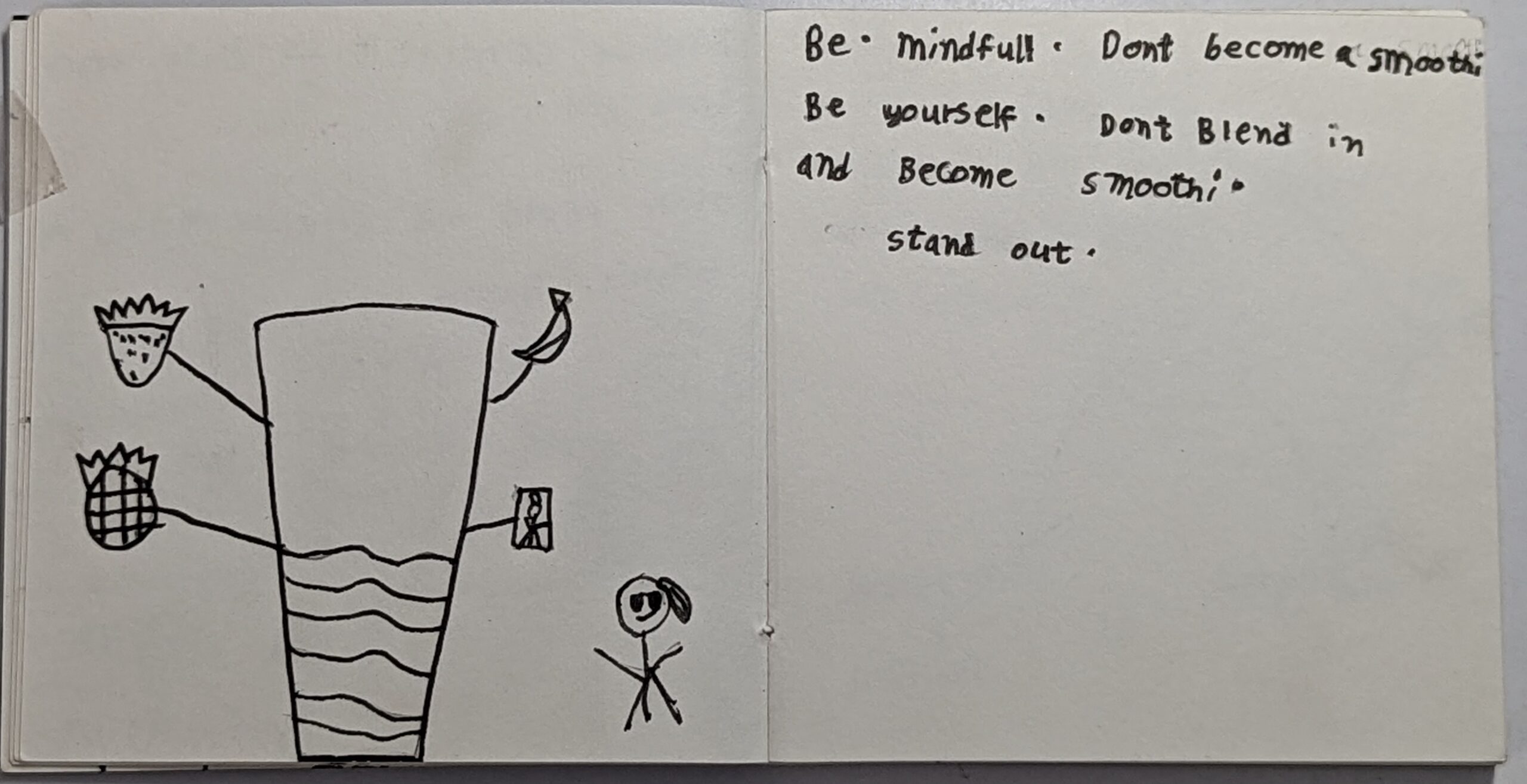
When Sabi was in preschool, she began to adopt habits from her friends. We understood this was natural, but we also wanted to help her recognize if a behavior was truly hers or something she was mirroring from others. So, we introduced the “Smoothie” analogy to her. Think of it like this: if Sabi is an apple and her friend is an apricot, when Sabi adopts a habit from her friend, she changes from an apple smoothie to an apple-apricot smoothie. This simple analogy resonated with her. Even as she grew older and started mirroring characters in books, we referred back to this concept. It’s a straightforward way we found to help her understand influence and individuality.
 Copied
Copied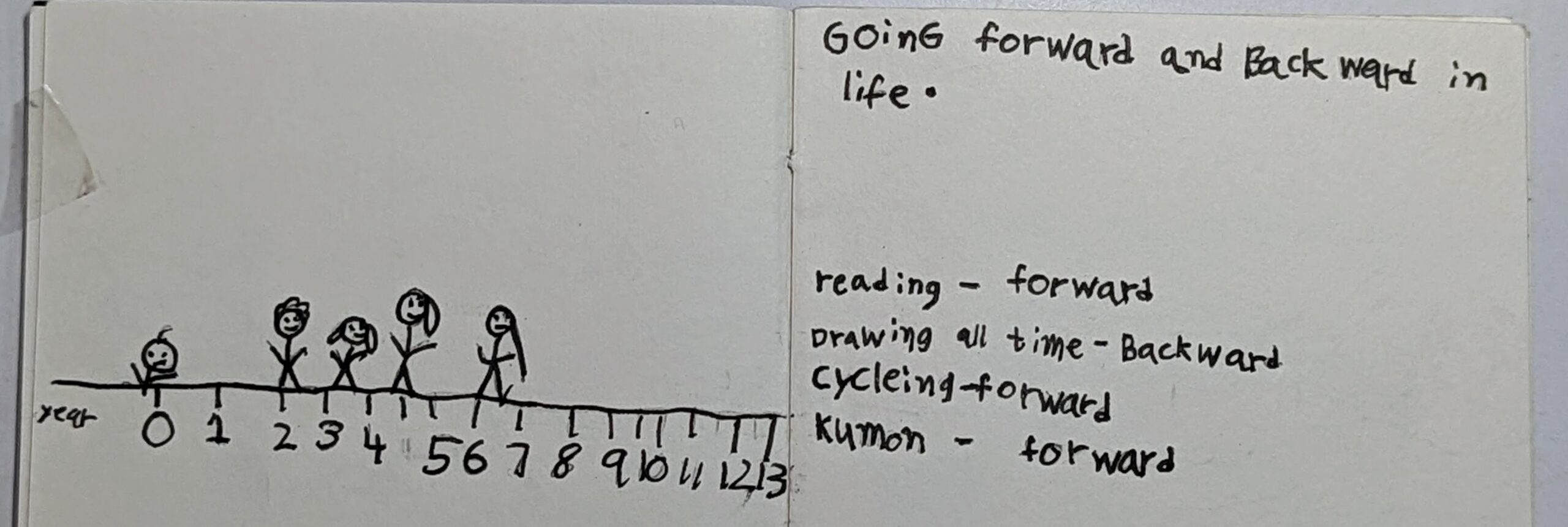
When your kid started acting younger out of the blue, you weren’t alone in feeling baffled. It happens! Kids sometimes slide back in their behaviors or skills, especially in early development. While we were okay with it, it was important to help Sabi recognize this. Hence, we drew a doodle and explained the concept to her. A year later, she remembered the concept and wrote this note in her journal.
 Copied
CopiedDelhi’s major parks are marvelously expansive, often spanning over 80 acres. These vast spaces cleverly compartmentalize into distinct areas, each evoking a unique ambiance, emphasizing the journey as much as the destination. The selection of diverse trees and plants infuses the environment with vibrant colors and varied textures. Strategically placed trees ensure lovely shaded retreats, while the thoughtful layering of plants at different heights introduces depth and intrigue. The parks masterfully employ elements like sand, gravel, grass, and rocks, curating distinctive walking paths. The integration of water features, such as ponds, streams, and fountains, brings about a dynamic yet tranquil dimension. These allow for addition of bridges. The terrain’s varied slopes and winding paths further ignite a sense of discovery and wonder.
We wanted to make sure little Sabi got a lot of exercise, around 7000-10000 steps, while in the park. So, we created a fun game for her called “Find the Gorilla”. We’d tell Sabi there was a shy baby Gorilla somewhere in the park. Her challenge was to find it. Each new area of the park made the game more exciting and kept Sabi on the move.
 Copied
CopiedWe taught our pre-schooler Sabi to walk using a simple game called Train and Bogie.
A train consists of two main parts: the locomotive with the engine and the carriage where passengers sit. Instead of complicated words, we used “train” for the locomotive part and “bogie” for the carriage. These names were fun and easy-to-remember for pre-schoolers.
During our walks, when we noticed Sabi getting tired, we kicked off our Train and Bogie game. In this game, all of us – Dad, Mom, and Sabi – joined hands. One of us played the role of the train, making train sounds, and pulled the others along. The fun part? The bogies couldn’t stop. This got Sabi laughing and eager to keep walking. Then eventually Sabi wanted to take on the role of the train, pulling us along with giggles.
 Copied
CopiedVisit any park with toddlers and pre-schoolers, and you’ll often hear, “Don’t do that.” We’ve observed parents telling kids not to jump off a table barely 3 feet high, not to use knives, climb trees, dig in the mud, or run too quickly. Decades ago, we played outside with our friends, no parents watching over us. Nowadays, we tend to hover over our children, letting our fears and anxieties affect them.
We suggest a different approach. Let kids be kids. Encourage them to jump, climb, and even fall. The key is to prevent lasting harm. Anything less teaches them valuable lessons, allowing them to discover and grow.
If we’re worried, we should invest time and effort to teach them how to manage situations. Start by showing toddlers how to cut soft fruits like bananas with dull knives. Each year, gradually introduce more challenges.
 Copied
CopiedWe’ve found that teaching preschoolers math with an abacus has lots of benefits. The abacus lets kids get hands-on with numbers and math, making it easier for them to understand. It also helps them with visual and spatial skills, recognizing patterns, and staying focused. Using the abacus builds their confidence in math and helps them learn addition and subtraction early on, which is great for problem-solving. Plus, it’s good for their fine motor skills. Learning to use an abacus can also teach them about different cultures and traditions, which is pretty cool. Just remember, it’s best to mix abacus learning with other math activities for a well-rounded education. How you use it matters too, so keep that in mind.
 Copied
Copied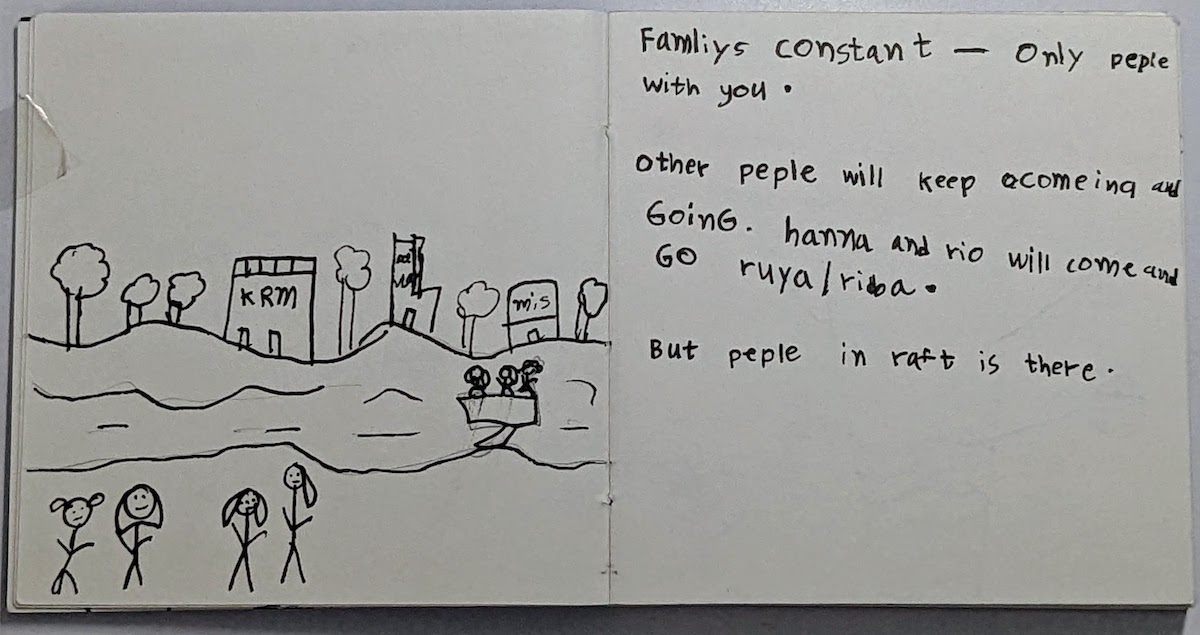
Hi Sabi,
Life is a river and you’re on a raft, flowing through its currents. You don’t know where you’re going, but you want to make the most of the journey.
The river isn’t a straight path with a set destination, but a winding journey that requires skill and courage. One minute you’re paddling through a calm stream, and the next you’re in the middle of a wild river.
Every place you pass through — valley and gorge — makes you feel like a different person. You meet a lot of interesting people: friends, family, teachers, and strangers. You laugh and argue, build and destroy, and learn from each other.
You like some of them, and not others, but each one changes you in some way. You develop new perspectives and gain valuable insights.
As you grow up and go on to do different things, your raft will move further downstream the river.
People and places will pass, but your family will remain with you. So, respect, value, and love your family.
Don’t become too attached to people and places. They will pass. Don’t be too happy or too sad when they make you feel those emotions. Have multiple avenues of friends and social connections so that if you struggle in any one of them, you have others to rely on.
Regards,
Dhara and Ritvvij

 Copied
CopiedAt two and a half years, we felt it was time to delve into lessons about self-care and responsibility. Simple acts like brushing or exercise became focal points.
Wanting an engaging, hands-on experience, we turned to planting micro-greens in our balcony. The task for Sabi? Water them daily. Some days she’d miss out, and the wilting plants showed it. This wasn’t just about plants. It was about understanding that today’s efforts lead to future results. After weeks of care, she finally got to harvest. The outcome? A fresh salad and a lesson in patience.
Things to purchase: Mini Garden Toolset, Cocopeat, Microgreen Seeds, Potting Soil.




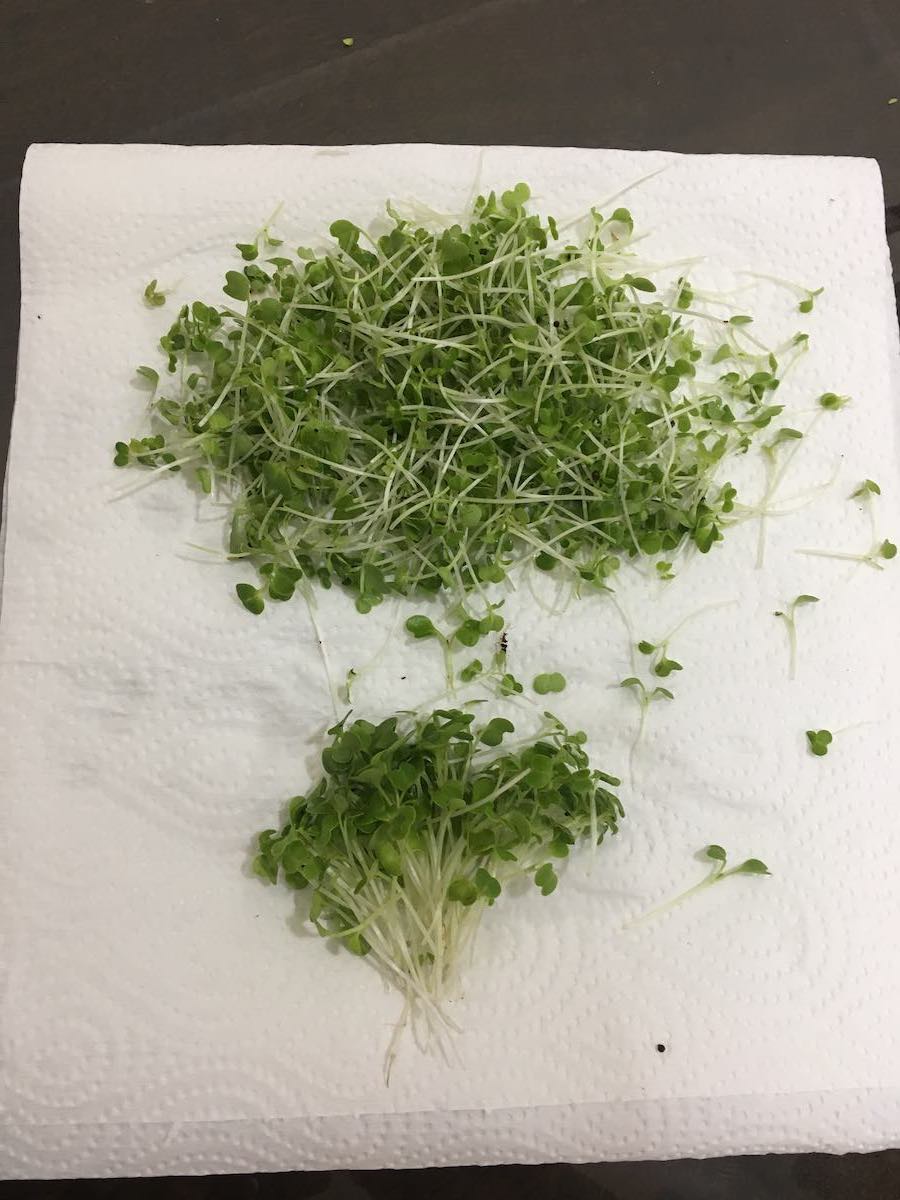

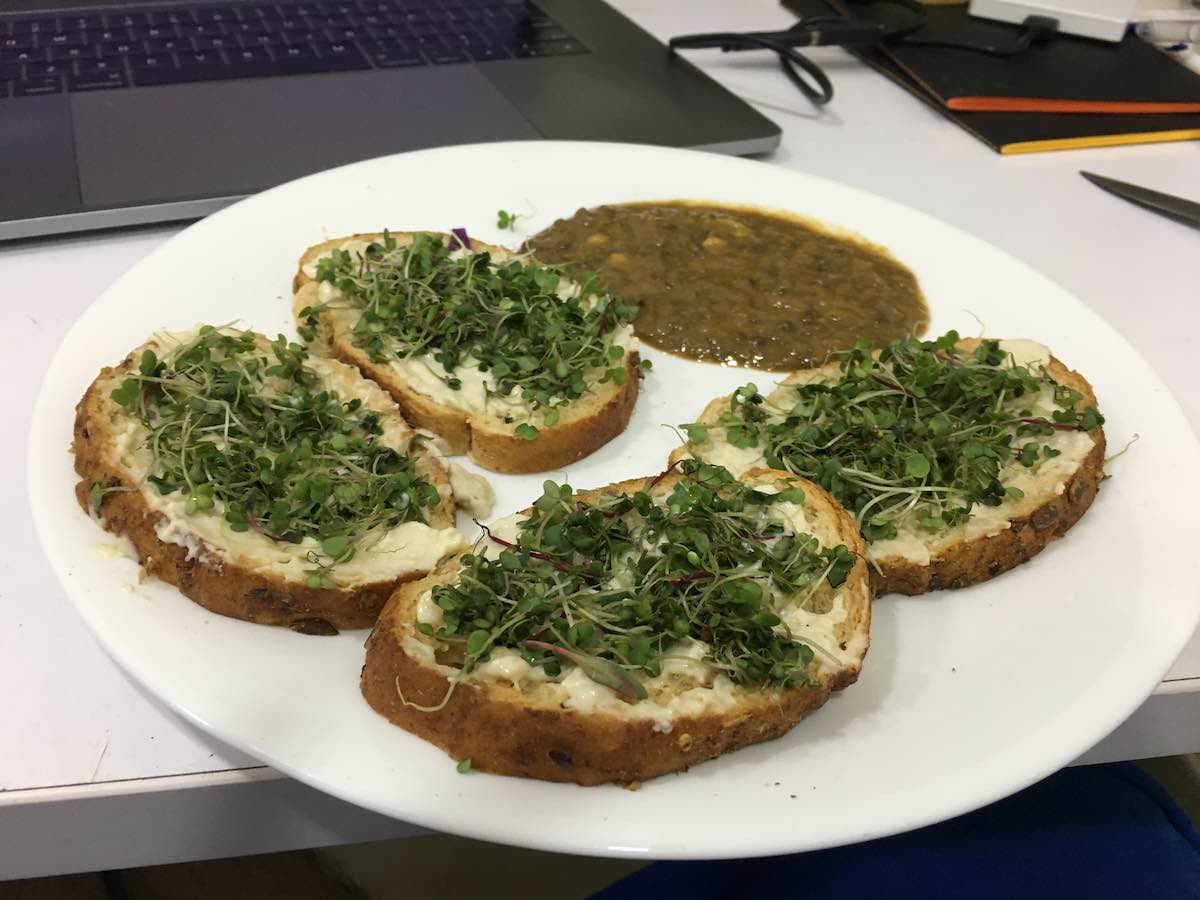
A couple of years later, Sabi wrote this note for herself in the journal.

 Copied
Copied


